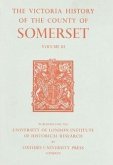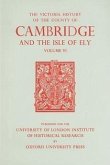The fifth volume of the history of Somerset contains the histories of twenty-two parishes in the eastern part of the hundred of Williton and Freemanors and of one parish, Holford, part of which was in Whitley hundred. The parishesoccupy a roughly triangular area of western Somerset includ-ing the southern and eastern part of the Brendon hills as far as the Devon border, the north-western end of the Quantock ridge, the wide valley between them, and some ofthe coastal strip to the north which faces the Bristol Channel. Extensive grazing on the Hangman Grits of the Quantocks and the slates of the Brendons was an important feature of the economy, and the Quantocks still retain largetracts of uncultivated heath land. Mining for copper on the Quantocks and for iron ore on the Brendons, and quarrying limestone for burning in most parishes, provided an important industrial element in the 18th and 19th centuriesbeside an agrarian system which in the 17th century and earlier had concentrated on sheep and cattle on the higher ground and arable in the valleys and coastal strip. Cloth-making was of significance in many parishes until the earlier 19th century. The nucleated villages in the east of the area contrast with the scattered pattern of Brendon settlement. Stogumber and St. Decumans had Saxon minster churches; boroughs were formed in the Middle Ages at Crowcombe, Nether Stowey, and Watchet. A castle was built at Nether Stowey, a monastery in Old Cleeve parish. Williton emerged as an urban centre in the 19th century. Among the large houses featured are Nettlecombe Court, Orchard Wyndham, St. Audries, and Court House, East Quantoxhead. The Acland-Hoods, the Carews, the Luttrells, the Trevelyans, and the Wyndhams were prominent in land ownership and government; also important in the local economy were the 17th-century country shopkeepers selling figs and canary seed, the seaweed burners and paper-makers of the 18th century, and the shippers of grain, flour, and timber in the 19th.








